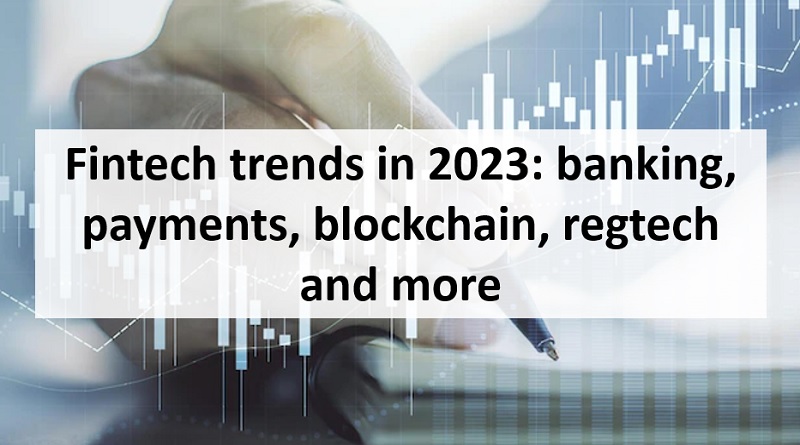Fintech trends in 2023: banking, payments, blockchain, regtech and more
In recent years, fintech is on the rise and with the growing demand for digital solutions to manage financial services, this trend is expected to continue through 2023. There is a growing need for digital solutions to manage financial services. the size of the global fintech market is predicted to total $305 billion by 2023. This expansion can be attributed to many factors including technological developments, better acceptance of products fintech by regulators and growing customer demand for financial solutions. simple and safe.
Here are some key trends expected to shape the global fintech market in 2023:
Growing demand for banking solutions:
To meet the increasing number of individuals who trust digital banking solutions, financial institutions are gradually investing in technology that can better meet the needs of their customers. This involves developing AI-based chatbots that give consumers access to cloud-based technologies that allow them to easily manage their finances from anywhere. Banks are also working to develop more personalized services for consumers, based on the specific needs of each customer.
Growth of cross-border and contactless payments:
Globally, cross-border payments and contactless payments are gaining popularity due to the proliferation of global businesses. Technology is improving the speed, safety and security of international transactions. Businesses can speed up payment processing and reduce fraud. In recent years, contactless payment systems have grown in popularity, allowing customers to make secure purchases worldwide with their phone or credit card. Thanks to multi-factor authentication, this payment option is user-friendly and secure. As governments embrace the global digital economy, cross-border and contactless payments are bound to increase. For example, the government could regulate multinational corporations or use blockchain technology to speed up international settlements. From 2023 onwards, cross-border payments and contactless payments will remain popular due to their security and global trade opportunities.
Increasing adoption of DeFi and Blockchain technology:
The use of blockchain technology has steadily increased over the past few years due to the fact that it can reliably and securely store data as well as perform reliable transactions without the need for a third party. act as an intermediary. In addition, various fintech organizations are implementing it as a way to simplify business procedures, reduce fraudulent activity, and improve the quality of services they provide to their customers. Ripple and other blockchain-based platforms have become popular with businesses and consumers, which will lead to wider adoption in the future. The future of DeFi protocols like stablecoins, which offer increased liquidity, cost savings, and stability, is intriguing. Within two years, it is expected that DeFi and blockchain technology will drive innovation in various fields.
The development of non-bank financial technology services:
Non-bank fintech companies offer a wide range of products such as online payment services, mobile wallet services, and cryptocurrency exchanges. The ease of use and relative affordability of these solutions compared to more conventional banking services have contributed to their rapid rise in popularity. When it comes to non-bank financial technology solutions, companies like PayPal are leading the way; but, as regulations continue to be relaxed, over time more companies will enter the field.
The evolution of the open banking platform:
An open banking platform that allows customers to access their financial data from a variety of sources within the confines of a single, user-friendly platform. This gives clients the ability to better understand and make more informed decisions regarding their money management habits. Due to the laws introduced under the EU PSD2 directive, these platforms have already started making waves across Europe. More countries will soon follow, thanks to a better understanding of these solutions by consumers.
An improved regulatory landscape:
In response to increasing consumer demand for digital financial services solutions, regulators around the world regularly relax restrictions on fintech companies. This not only gives existing businesses more authority when inventing new products or launching new services across geographic boundaries but also incentivizes new entrants to the market by encouraging them to enter the market.
Built-in Finance Improvements:
Integrated financial technology will allow consumers to access their financial information and make payments and transfers without difficulty. Integrated finance will increase the speed and flexibility of digital transactions for banks, payment service providers, insurance companies and other businesses. Industry ties can accelerate fintech companies’ new product development. Open banking standards will continue to transform the delivery of payments, data, and financial services. AI and ML breakthroughs can help companies improve their operations through integrated finance. As a result, integrated finance is expected to transform our financial interactions by the end of 2023.
Overall, it is certain that 2023 will be an important year for the global fintech market; With the growing demand for digital banking solutions as well as an improved regulatory landscape, paving the way for more innovative technologies like blockchain to be adopted on a wider scale than ever before – We can expect exciting times ahead!








